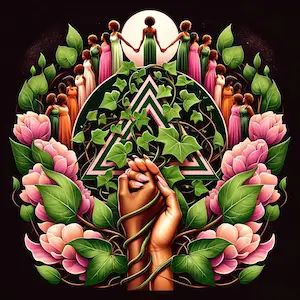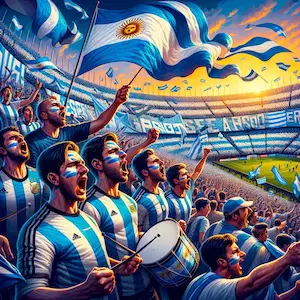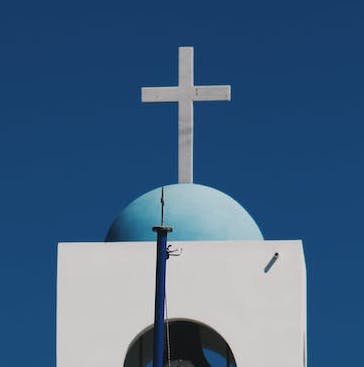Immerse yourself in the soul-stirring world of Celtic Litany Chants, a musical tradition that weaves the tapestry of ancient melodies, profound spirituality, and the rich cultural heritage of the Celtic people. Originating from the misty highlands and lush valleys of Ireland, Scotland, and Wales, these chants are more than mere melodies; they are the echoes of a civilization, a profound expression of life, nature, and the divine. This article explores the depths of Celtic Litany Chants, delving into their historical roots, musical structure, linguistic beauty, and their integral role in religious practices, healing, meditation, and communal celebrations. Join us on this enchanting journey through time and melody, where each note resonates with the whispers of ancestors and the timeless dance of tradition and transformation.

Table of Contents
The History of Celtic Litany Chants
The history of Celtic Litany Chants is as mystical and profound as the melodies themselves, echoing through the misty highlands and lush green valleys of ancient Celtic lands. These chants are not mere songs; they are the narrators of history, culture, and spirituality, deeply intertwined with the life of the Celtic people.
Early Beginnings The roots of Celtic chants can be traced back to the early medieval period, a time when oral tradition was paramount, and music served as a vital medium to preserve history, law, and folklore. The Celts, known for their profound connection with nature and the divine, expressed their reverence and wisdom through these liturgical verses. Initially, these chants were purely vocal and deeply spiritual, meant to invoke the natural elements and the deities they worshipped.
Transition and Evolution As centuries passed, Celtic Litany Chants underwent a profound transformation, particularly with the advent of Christianity. The 5th century saw the arrival of St. Patrick and the beginning of the Christian era in Celtic lands. This period marked a significant shift in the content and form of the chants. Christian monks and scribes began to incorporate elements of their faith into the chants, blending the rich Celtic pagan traditions with Christian narratives. This fusion gave birth to a unique genre of liturgical music, characterized by its haunting melodies and profound spiritual depth.
The monasteries played a crucial role in the evolution of these chants. Monastic scribes meticulously transcribed these oral traditions, ensuring their preservation. The famous Book of Kells, an illuminated manuscript from the 9th century, is a testament to the artistic and cultural richness of this era, hinting at the importance of liturgical chants in monastic life.
Preservation and Revival Despite the challenges of time and historical upheavals, the essence of Celtic Litany Chants has survived. The 19th and 20th centuries witnessed a resurgence of interest in Celtic culture and music. Scholars and musicians began to rediscover and revive these ancient melodies, recognizing their cultural and spiritual significance. This revival was not just about preserving a musical genre; it was about reclaiming a vital link to a rich heritage and identity.
In modern times, Celtic Litany Chants continue to fascinate and inspire. From solemn religious ceremonies to vibrant cultural festivals, these chants remain a living tradition, a bridge connecting the past with the present, the earthly with the divine.
The journey of Celtic Litany Chants is a testament to the resilience and enduring beauty of Celtic culture. As we delve into their melodies, we are not just listening to music; we are experiencing the heartbeat of a civilization, the whispers of ancestors, and the eternal dance of tradition and transformation.
Musical Structure of Celtic Chants
The musical structure of Celtic Litany Chants is a mesmerizing tapestry, woven with intricate patterns of rhythm and melody. It reflects a deep connection with the natural world, a harmonious blend of simplicity and complexity that resonates with the soul. Understanding this structure allows one to appreciate not just the music itself but the rich cultural and historical context from which it emerges.
Rhythmic Patterns The rhythm of Celtic chants often mirrors the natural cadences found in the landscapes of the Celtic regions – the gentle roll of hills, the steady flow of rivers, and the cyclical patterns of the seasons. The rhythm is typically free and flowing, lacking the strict meter found in much of Western music. This fluidity gives Celtic chants their distinctive, meditative quality, allowing the listener to be carried along as if by a gentle stream.
The use of syncopation and irregular meters is also a hallmark of Celtic music, including its liturgical chants. These rhythmic variations add a layer of complexity and can evoke a range of emotions, from solemn reverence to joyful celebration. The rhythm serves not just as a foundation for the melody but as an expressive tool in its own right, capable of conveying the depths of human experience.
Melodic Features The melodies of Celtic Litany Chants are hauntingly beautiful, often characterized by their simplicity and emotional depth. They typically follow a modal structure, which predates the major-minor tonality system of Western classical music. The use of modes such as Dorian, Mixolydian, and Aeolian lends these chants a distinctive sound – one that can feel both ancient and fresh, both familiar and otherworldly.
One of the most striking features of Celtic melodies is their use of ornamentation. Techniques such as grace notes, trills, and glissandos are not merely decorative; they breathe life into the music, infusing it with a sense of spontaneity and expressiveness. These ornaments can vary widely from one performance to another, making each rendition of a chant unique.
The pentatonic scale, consisting of five notes per octave, is another common feature in Celtic music, including its liturgical chants. This scale, found in musical traditions around the world, has a universal appeal, perhaps due to its inherent balance and symmetry. In Celtic chants, the pentatonic scale contributes to the music’s transcendent quality, lifting the listener out of the mundane and into the realm of the spiritual.
Harmony and Texture While early Celtic chants were primarily monophonic, meaning they consisted of a single melodic line, later developments saw the introduction of harmony and polyphony. However, even in these more complex textures, there is often a sense of restraint and subtlety. The harmony serves to enhance the melody, not overshadow it.
The use of drones – sustained notes or chords – is another characteristic feature of Celtic music. In liturgical chants, a drone can provide a steady sonic backdrop, against which the melody can unfold in all its intricacy. This interplay between the drone and the melody can create a sense of timelessness, a space for reflection and contemplation.
In conclusion, the musical structure of Celtic Litany Chants is a mirror of the Celtic soul – profound, reflective, and deeply connected to the natural world. Through their rhythmic patterns, melodic features, and harmonic textures, these chants invite us into a space where music and spirituality intertwine, where each note and each silence speaks of centuries of tradition, of a culture that sings, prays, and lives in harmony with the earth.
Lyrics and Language of Celtic Chants
The lyrics and language of Celtic Litany Chants are as integral to their allure and depth as the music itself. Rooted in the ancient tongues of the Celtic regions, these chants convey rich narratives, spiritual insights, and a profound connection to nature. The choice of words and the language itself carry a legacy that transcends time, inviting listeners into a realm of mysticism and tradition.
Old Irish and Scottish Gaelic The primary languages of Celtic chants are Old Irish and Scottish Gaelic, each possessing its unique cadence and phonetic charm. Old Irish, the language of the early Celts in Ireland, has a lyrical quality that lends itself beautifully to the art of chant-making. Its structure and sounds are thought to resonate with the natural world, encapsulating the essence of the earth, sea, and sky in its rhythm and intonation.
Scottish Gaelic, with its rich oral tradition, carries the stories, beliefs, and collective wisdom of the Scottish Highlands. The language’s tonal quality and rhythmic flow make it a perfect vessel for the spiritual and communal messages often found in Celtic chants. The preservation of these languages in the chants is not just a cultural treasure but also a linguistic one, offering insights into the Celtic way of life and thought.
Symbolism in Lyrics The lyrics of Celtic Litany Chants are imbued with deep symbolism, often drawing from the natural and mystical elements of the Celtic world. The imagery used in these chants is rich and evocative, painting vivid pictures of the landscapes, seasons, and folklore central to Celtic identity.
Nature is a recurring theme, symbolizing the interconnectedness of life and the divine. Trees, rivers, stones, and animals are not mere objects in these chants but bearers of wisdom and gateways to the spiritual realm. The lyrics often explore the cycles of life, death, and rebirth, reflecting the Celtic reverence for the natural order and the belief in the continuity of life.
The symbolism extends to the portrayal of deities and spiritual entities. The Celts had a pantheon of gods and goddesses, each embodying different aspects of life and nature. The chants pay homage to these deities, invoking their powers and seeking their guidance. The language used is rich with metaphors and allegories, inviting listeners to look beyond the literal and delve into the deeper, mystical meanings.
Preservation and Revival In preserving the lyrics and language of Celtic Litany Chants, modern-day scholars and enthusiasts face a significant challenge. The ancient Celtic languages are no longer spoken in their original forms, and much of the oral tradition was not documented in written form. However, efforts are being made to revive and protect these linguistic treasures. Translations, interpretations, and academic studies are helping to bring the wisdom of the ancient Celts to a broader audience, ensuring that the beauty and depth of these chants are not lost to time.
In conclusion, the lyrics and language of Celtic Litany Chants are a testament to the rich cultural and spiritual heritage of the Celtic people. They offer a window into a world where every word is imbued with meaning, and every verse is a thread in the tapestry of Celtic history and spirituality. In exploring these ancient chants, one is not merely learning a song but entering a conversation with the past, a dialogue that continues to resonate through the ages.
List of Celtic Litany Chants
- Aignech (The Herdsman)
- Lyrics:
- Irish Gaelic: “Aignech, ar n-éirigh dúinn, as éirigh, am éirigh!”
- English Translation: “Herdsman, rise up for us, rise early, rise!”
- Meaning:
- This chant is a call to the herdsman, symbolizing the start of a day and the rhythm of pastoral life. It reflects the connection between human endeavors and nature’s cycles, highlighting the importance of diligence and harmony with the natural world.
- Lyrics:
- Beannacht Leat (Blessing with You)
- Lyrics:
- Irish Gaelic: “Beannacht leat, a bhean na healaí, beannacht leat, a chroí.”
- English Translation: “Blessing with you, woman of the swans, blessing with you, my heart.”
- Meaning:
- This chant is a blessing, often sung to invoke protection and good fortune. The reference to the swan, a significant symbol in Celtic mythology, represents grace, beauty, and the fluid journey of life.
- Lyrics:
- Carraig Aonair (The Lone Rock)
- Lyrics:
- Irish Gaelic: “Carraig Aonair amuigh sa bhfarraige, cloch is binne i mo thuairim.”
- English Translation: “Lone Rock out in the sea, the sweetest stone, in my opinion.”
- Meaning:
- This chant speaks to the steadfastness and resilience of the lone rock amidst the vast sea. It’s a metaphor for strength, endurance, and the beauty found in standing firm against life’s tumultuous waves.
- Lyrics:
- Dúlamán (Seaweed)
- Lyrics:
- Irish Gaelic: “Dúlamán na binne buí, dúlamán Gaelach.”
- English Translation: “Seaweed of the yellow peak, Gaelic seaweed.”
- Meaning:
- This chant is a celebration of the seaweed, a vital resource in Celtic coastal communities. It symbolizes nourishment, life, and the deep, inextricable bond between the people and the sea.
- Lyrics:
- Slán Le Máigh (Farewell to the Maigue)
- Lyrics:
- Irish Gaelic: “Slán le Máigh, a bhféadfainnse a bheith, ach coicís i m’aonar.”
- English Translation: “Farewell to the Maigue, if only I could be, but two weeks alone.”
- Meaning:
- This chant is a poignant farewell to the River Maigue, expressing a longing for solitude and reflection. It captures the deep emotional connection to the land and the desire for peace and introspection.
- Lyrics:
- Líadan (Grey Lady)
- Lyrics:
- Irish Gaelic: “Líadan, caoineadh na dtonn, a bhean fuair sí bás ón ngrá.”
- English Translation: “Grey Lady, lament of the waves, the woman who died from love.”
- Meaning:
- This chant is a mournful tribute to Líadan, a figure in Celtic mythology who represents the tragic, often intertwined, relationship between love and sorrow. The waves’ lamentation symbolizes the eternal mourning of nature for human suffering and loss.
- Lyrics:
- Suantraí ár Slánaitheora (Lullaby of our Savior)
- Lyrics:
- Irish Gaelic: “Codail, a linbh, le suaimhneas, ar bhrollach mhín do Mháthar.”
- English Translation: “Sleep, oh child, with peace, on the gentle breast of your Mother.”
- Meaning:
- This chant is a gentle lullaby invoking the protection and comfort of the divine. It represents the innocence of the child and the nurturing embrace of the mother, symbolizing the universal need for safety and love.
- Lyrics:
- Ceol an Ghrá (Music of Love)
- Lyrics:
- Irish Gaelic: “Ceol an ghrá, na habhainn, le glór na síog.”
- English Translation: “Music of love, of the rivers, with the voice of the fairy.”
- Meaning:
- This chant celebrates the enchanting beauty of love, likening it to the harmonious flow of rivers and the mystical voices of fairies. It underscores the notion that love is a natural, magical force that permeates the world.
- Lyrics:
- Gaoth Barra Na dTonn (Wind of Barra of the Waves)
- Lyrics:
- Irish Gaelic: “Gaoth Barra na dtonn, a ghaoth aduaidh, mo sheolta a bhfuar.”
- English Translation: “Wind of Barra of the waves, oh northern wind, my sails are cold.”
- Meaning:
- This chant speaks to the harsh, yet invigorating, northern winds characteristic of the Celtic seascapes. It symbolizes life’s challenges and the resilience needed to navigate through them, with the cold sails representing the readiness to face adversity.
- Lyrics:
- Óró Mo Bháidín (Oh, My Little Boat)
- Lyrics:
- Irish Gaelic: “Óró mo bháidín, ag seoladh go ciúin, óró mo chroí.”
- English Translation: “Oh, my little boat, sailing quietly, oh my heart.”
- Meaning:
- This chant is a tender ode to a small boat, a symbol of life’s journey. The quiet sailing represents a peaceful, introspective voyage, with the boat being a metaphor for the soul navigating the vast, often tranquil, seas of existence.
- Lyrics:
- An Raibh Tú Ag An gCarraig (Were You at the Rock)
- Lyrics:
- Irish Gaelic: “An raibh tú ag an gCarraig? Nó a bhfaca tú féin mo ghrá?”
- English Translation: “Were you at the Rock? Or did you yourself see my love?”
- Meaning:
- This chant poses a poignant question, symbolizing the search for something precious that is lost. The Rock, a significant landmark in many Celtic tales, represents a place of meeting or parting, and the song reflects the universal themes of longing and the quest for reunion.
- Lyrics:
- Caoineadh na dTrí Muire (Lament of the Three Marys)
- Lyrics:
- Irish Gaelic: “Caoineadh na dTrí Muire, ag gol go cráite croí.”
- English Translation: “Lament of the Three Marys, weeping with tormented heart.”
- Meaning:
- This deeply emotional chant reflects the sorrow and devotion of the Three Marys at the Crucifixion. It is a profound expression of grief and love, encapsulating the intense spiritual and emotional connection found in many Celtic chants.
- Lyrics:
- Siúil A Rún (Walk, My Love)
- Lyrics:
- Irish Gaelic: “Siúil, siúil, siúil a rún, Siúil go sochair agus siúil go ciúin.”
- English Translation: “Walk, walk, walk, my love, Walk gently and walk quietly.”
- Meaning:
- This chant is a tender, comforting call to a loved one, inviting them to walk in peace and tranquility. It embodies the Celtic spirit of caring and protection, offering solace and calm in the journey of life.
- Lyrics:
- Amhrán Mhuínse (Song of Muínis)
- Lyrics:
- Irish Gaelic: “Fáinne geal an lae, tá an spéir amuigh bán.”
- English Translation: “The bright ring of the day, the sky outside is white.”
- Meaning:
- This chant celebrates the beauty of the dawn and the promise of a new day. The imagery of the bright ring and the white sky conveys a sense of renewal and hope, central themes in Celtic spirituality.
- Lyrics:
- Tá Mé ‘Mo Shuí (I Am Awake)
- Lyrics:
- Irish Gaelic: “Tá mé ‘mo shuí ó d’éirigh an ghealach aréir.”
- English Translation: “I am awake since the moon rose last night.”
- Meaning:
- This chant expresses the vigilance and contemplation of the singer, awake through the night, under the moon’s watchful eye. It symbolizes introspection and the search for wisdom and understanding, themes deeply ingrained in Celtic thought and culture.
- Lyrics:
These chants, with their evocative lyrics and profound meanings, offer a window into the Celtic soul, a world where the spiritual, natural, and emotional realms are beautifully intertwined. Each chant is a story, a prayer, and a piece of the rich cultural mosaic that is the Celtic heritage.
Celtic Litany Chants in Religious Practices
Celtic Litany Chants hold a revered place in the tapestry of religious practices, intertwining the ancient Celtic spiritual traditions with the later Christian influences. These chants, transcending mere musical compositions, have evolved into profound expressions of faith, devotion, and community bonding, serving as a bridge between the earthly and the divine.
Pagan Roots and Christian Transformation The origin of Celtic chants predates Christianity, rooted in the pagan traditions where music was an integral part of worship and ritual. The Celts believed in the power of music to invoke the deities, to celebrate the cycles of nature, and to mark the passage of seasons and life events. These early chants were deeply connected to the natural world, reflecting the Celts’ reverence for the land, sea, and sky.
With the advent of Christianity, particularly through the missionary work of figures like St. Patrick in the 5th century, these chants underwent a significant transformation. The Christian monks and missionaries, recognizing the power of music in the Celtic culture, began to integrate Christian themes and narratives into the existing chants. This integration was not merely a replacement of the old with the new but rather a weaving together of the two traditions, creating a rich tapestry of religious expression.
Use in Liturgy and Worship Celtic Litany Chants found a prominent place in the Christian liturgy, especially in the monastic communities. These chants were used to mark the hours of prayer, to celebrate the Eucharist, and to commemorate saints and holy days. The structure of the chants, with their repetitive and meditative quality, was well-suited for the liturgical context, aiding in contemplation and spiritual communion.
The chants served not just as a means of worship but also as a tool for memorization and meditation on the scriptures and the lives of the saints. The melodic lines and rhythmic patterns made it easier for the faithful to remember and internalize the religious texts, making the divine word a part of their daily lives.
Modern Revival and Integration In modern times, there has been a resurgence of interest in Celtic spirituality and, with it, the liturgical use of Celtic chants. Many contemporary Christian communities, seeking a more profound and contemplative worship experience, have turned to these ancient melodies for inspiration. The chants are seen as a means to reconnect with the early, more mystical roots of Christianity and to explore new dimensions of faith and devotion.
The integration of Celtic chants into modern worship is not just a revival of old traditions but also a creative adaptation to contemporary contexts. New compositions are being created, blending the ancient melodies with modern musical elements, making the rich heritage of Celtic spirituality accessible and relevant to the present day.
In conclusion, Celtic Litany Chants in religious practices are a testament to the enduring power of music as a medium of spiritual expression and connection. These chants, evolving through centuries, continue to inspire, uplift, and unite, bridging the past and the present, the human and the divine.
Celtic Chants in Healing and Meditation
Celtic chants, with their ethereal melodies and profound lyrical depth, have transcended their historical and cultural origins to become a source of healing and meditation for many. The unique blend of rhythm, melody, and poetry in these chants provides a powerful medium for emotional release, spiritual reflection, and holistic healing, resonating with individuals across different cultures and beliefs.
Therapeutic Properties of Celtic Chants The therapeutic properties of Celtic chants lie in their ability to create a serene and introspective ambiance, conducive to healing and meditation. The repetitive and often hypnotic nature of these chants induces a state of calm, allowing the mind to focus and the body to relax. This can be particularly beneficial in today’s fast-paced world, where stress and anxiety are commonplace.
The melodic patterns and harmonies of Celtic chants often mimic the natural sounds of the Celtic landscapes – the whisper of the wind, the rhythm of the waves, and the gentle rustle of the leaves. This connection with nature’s own symphonies can foster a sense of grounding and tranquility, reminding us of the deeper rhythms of life and our innate connection to the natural world.
Integration in Modern Practices In modern therapeutic practices, Celtic chants are increasingly being integrated into various forms of therapy and meditation. Music therapists, for instance, use these chants to aid in stress reduction, emotional expression, and cognitive rehabilitation. The chants are also a popular choice in meditation and yoga sessions, where they are used to enhance focus, breathing, and mindfulness.
The use of Celtic chants in healing is not limited to formal therapeutic settings. Many individuals incorporate these chants into their personal wellness routines, using them as a backdrop for meditation, relaxation, or simply as a means to unwind and disconnect from the stresses of daily life.
A Tool for Emotional and Spiritual Exploration Beyond their soothing properties, Celtic chants offer a rich medium for emotional and spiritual exploration. The profound and often introspective lyrics can serve as a catalyst for self-reflection and inner dialogue, allowing individuals to explore deeper emotional states and spiritual questions.
For many, engaging with these chants is a journey into the ancestral past, a way to connect with the wisdom and traditions of the Celtic people. This connection can be a source of strength and inspiration, providing a sense of continuity and belonging that is deeply healing in itself.
In conclusion, Celtic chants in healing and meditation offer a sanctuary for the mind, body, and spirit. They provide a space where the harmonious interplay of melody, rhythm, and poetry can work its therapeutic magic, offering solace, insight, and a deep sense of connection to the rhythms of life and the whispers of the past. Whether in a formal therapeutic setting or a personal space of reflection, these ancient melodies continue to heal, inspire, and transform.
Celtic Litany Chants in Festivals and Celebrations
Celtic Litany Chants, with their deep-rooted history and cultural significance, play a central role in the festivals and celebrations of the Celtic communities. These chants are not just musical compositions; they are living traditions that encapsulate the spirit of the Celtic people, their joy, sorrows, hopes, and heritage. Within the framework of festivals and celebrations, these chants serve as a powerful medium for community bonding, cultural expression, and the preservation of a rich ancestral legacy.
Annual Events and Cultural Celebrations Throughout the Celtic regions, annual festivals and cultural celebrations serve as a vibrant platform for the performance of Celtic Litany Chants. Events such as the Celtic New Year (Samhain), Imbolc (celebrating the beginning of spring), Beltane (marking the start of summer), and Lughnasadh (a harvest festival) are imbued with chants that have been passed down through generations. These chants are not just musical performances but rituals that connect the present with the past, the living with their ancestors.
The chants performed during these events often narrate stories of the Celtic gods and heroes, invoke blessings for the community, and express gratitude to nature for its bounties. They are an integral part of the ceremonies, woven into the fabric of the rituals that define these festivals.
Role in Community Bonding Celtic Litany Chants play a crucial role in strengthening community bonds. During festivals and celebrations, people come together to sing these chants, creating a sense of unity and shared identity. The act of communal singing, where voices merge into one, is a powerful expression of solidarity and belonging. It’s a moment where individual differences dissolve into the collective rhythm and harmony of the community.
For the Celtic diaspora, these chants are a link to their homeland, a reminder of their roots and traditions. Festivals and celebrations become a space where the diaspora can reconnect with their cultural heritage, keeping the flame of their ancestral legacy alive, even miles away from their original homeland.
Preservation and Evolution Festivals and celebrations are not just about preserving the old but also about embracing the new. Celtic Litany Chants, while deeply traditional, are not static. They evolve, incorporating contemporary musical elements, adapting to new contexts, and resonating with newer generations. These events become a creative space where tradition meets innovation, where the ancient chants are reinterpreted, giving them new life and relevance.
Artists and musicians play a crucial role in this process of preservation and evolution. By bringing these ancient chants to festivals and concerts, they ensure that this rich musical heritage is not just remembered but also celebrated and lived. They keep the tradition dynamic, engaging, and accessible to people of all ages and backgrounds.
In conclusion, Celtic Litany Chants in festivals and celebrations are a vibrant testimony to the enduring spirit of the Celtic culture. They are a celebration of life, a homage to the past, and a beacon for the future, nurturing the community’s soul and keeping the Celtic legacy forever alive in the hearts and voices of its people.
FAQs
Can Celtic Litany Chants be used in modern meditation and healing practices?
Yes, Celtic Litany Chants are increasingly used in modern meditation and healing practices due to their tranquil melodies and reflective lyrics. Their repetitive and harmonic nature can induce a meditative state, making them suitable for stress relief, mindfulness practices, and therapeutic settings.
Are there any festivals or events where I can experience Celtic Litany Chants?
Many Celtic festivals and cultural events feature Celtic Litany Chants. Celebrations such as Samhain, Imbolc, Beltane, and Lughnasadh often include performances of these chants. Additionally, Celtic music festivals, cultural workshops, and spiritual retreats are great places to experience these chants firsthand.
See Related Posts

Love Spell Chants

Best Softball Chants for U12

AKA Sorority Chants

Argentina Football Chants

Short Chants and Cheers

Alabama Football Chants

Everything to Know About African Chants

Greek Orthodox Church Chants
Squid Games Chants


